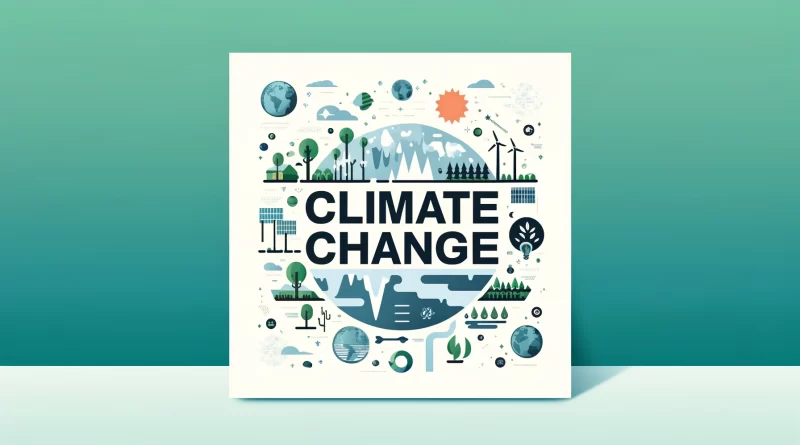What is Climate Change?
Climate change refers to long-term shifts in temperatures and weather patterns. These climate changes may be due to natural factors, such as changes in sun activity or significant volcanic eruptions. Still, by far the most important factor is human activities since the 1800s. The burning of fossil fuels, like coal, oil, and gas, produces greenhouse gases that trap heat within Earth’s atmosphere, causing global temperatures to rise.
Causes of Climate Change
Human Activities
The major responsible factor for the current change in climate is the burning of fossil fuels, which creates a substantial amount of carbon dioxide (CO2) and methane (CH4) gas to be released into the atmosphere. These gases capture the heat from the sun and warm the planet. Some of the many other human activities that lead to climate change are:
- Deforestation: Clearing forests releases of stored carbon dioxide.
- Agriculture: Activities like animal husbandry produce methane.
- Industrial Processes: Almost all industry activities are sources of greenhouse gases.
Natural Factors
Although human activities are the leading cause of Climate change today, natural factors are part of these causes. They include:
- Volcanic Eruptions: Release of particles and gases that tend to inhibit climate change moderately.
- Solar Variations: Fluctuations in the sun’s energy output can influence the climate.
- Orbital Changes: The Earth’s orbit evolves over thousands of years, thereby eliciting variations in climate.
Effects of Climate Change
Temperature Rise
Global warming is one of the significant effects of climate change that refers to the long-term increase in Earth’s average surface temperature. Since the pre-industrial period, human activities have increased this temperature by about 1° Celsius (about 1.8° Fahrenheit). Such warming is accelerating, with temperatures increasing by over 0.2 degrees Celsius, or 0.36 degrees Fahrenheit, each decade.
Extreme Weather Events
Climate change is associated with an increase in the frequency and severity of extreme weather events, including:
- Heatwaves
- Hurricanes
- Floods
- Droughts
These events have devastating effects on the ecosystem and human communities, such as destroying infrastructure, disrupting food supplies, and increasing health risks.
Melting Ice and Rising Sea Levels
Polar ice caps and glaciers are melting at rates never seen before, causing sea levels to rise. This threatens with increased flooding and erosion of coastal communities.
Ecosystem Disruption
Change in climate alterations the distribution and behavior of species. For instance, many plants and animals move their ranges towards poles or higher altitudes where conditions are not warmed. Such a change can lead to a loss of biodiversity and changes in ecosystem services upon which human societies rely.
Climate Change vs. Global Warming
While many people use “climate change” and “global warming” interchangeably, the two are not the same thing. Global warming strictly refers to the rise in Earth’s average surface temperature due to human activities. Climate change refers to the long-term warming of the planet as a whole. It is a package that includes everything from weather patterns and the widespread melting of snow and ice to more prolonged and more frequent extreme weather events.
Weather vs. Climate
The following distinction between weather and climate is essential:
- Weather is the current atmospheric conditions in a particular location at a specific point in time (e.g., rain, snow, wind).
- Climate: Long-term average of weather patterns over a meaningful period, usually 30 years or more, in a given region.
Proof of Climate Change
Scientists maintain awareness of climate change through observations made on the ground, in the air, and from space. Key indicators include:
- Global temperature increases on land and in oceans.
- Rising sea levels.
- Melting ice at the poles and in mountain glaciers.
- Changes in the frequency and intensity of extreme weather events.
- Alterations in cloud and vegetation cover.
International Agreements and Goals
Agreements and goals like the Paris Agreement and the Sustainable Development Goals set out what needs to be done globally to combat climate change. Their objective is to ensure global temperature does not rise by more than 2 degrees Celsius from pre-industrial levels, with moves to limit the rise to 1.5 degrees Celsius.
What Did We Learn Today?
Climate change is a complex issue and one that is very pressing, only mainly explained via human activities. It will be possible to cope with it through understanding its causes, its effects, and the actions that need to be taken for it: life on Earth. Through emissions reduction, in combination with adaptation, we can work toward making the future stable and healthier for those who will come after us.

